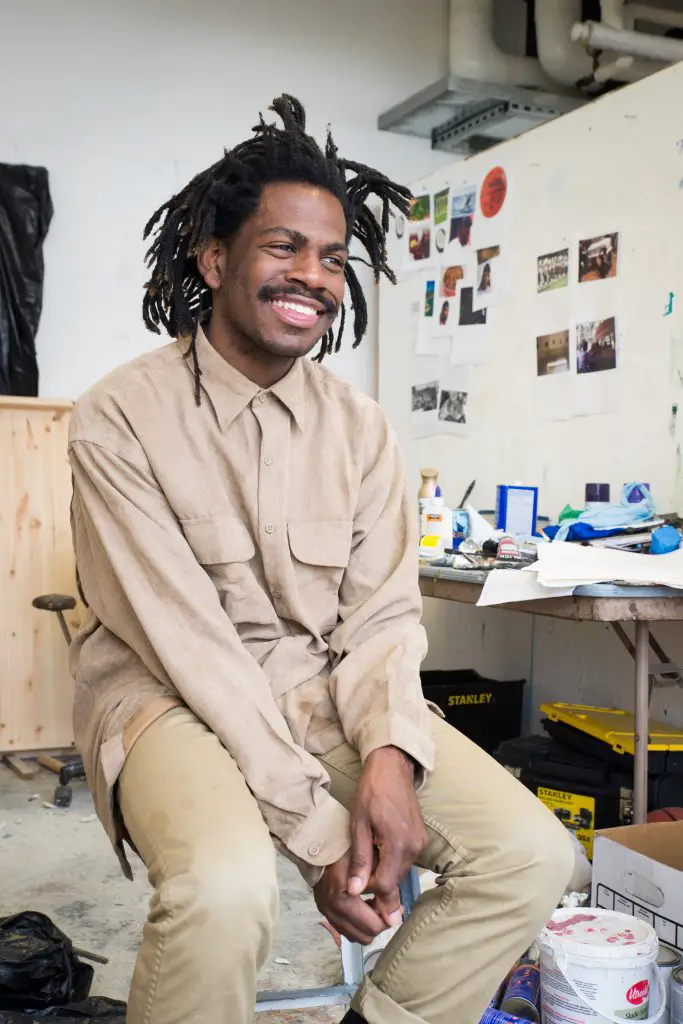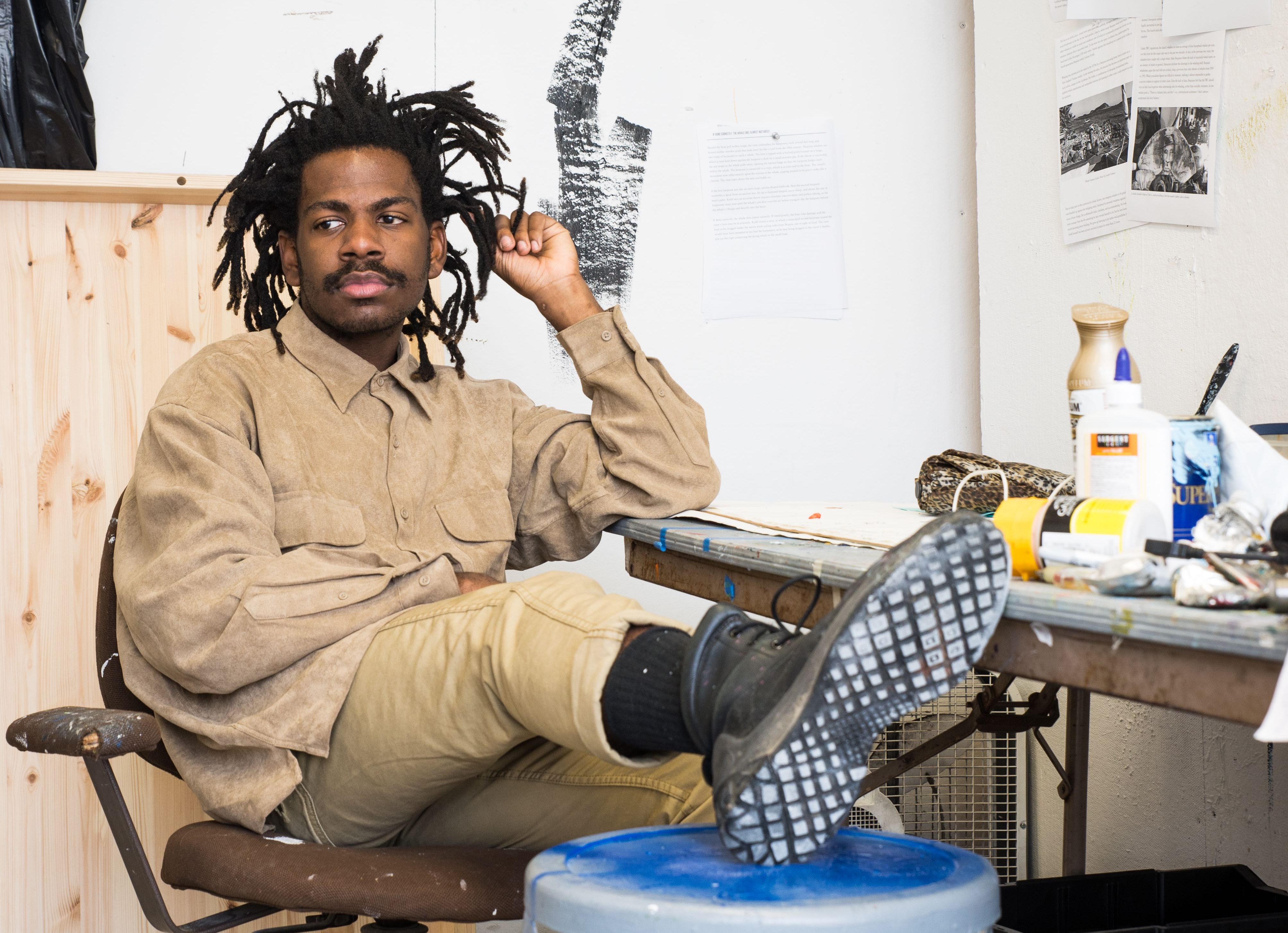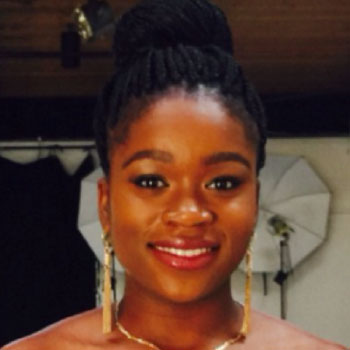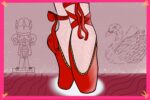One of Kasem Kydd’s paintings, “Loving Myself Violently in the Face of Blue Silence,” finds an androgynous black individual swathed in a mosaic of blues staring at what could either be a wall or a mirror; the spot holding their attention is intensely navy and resembles, in its outline, a police badge, and just behind the shape is what looks like a billy club. The inexpressive face of the work’s subject offers few emotional cues, but seems to exude an intense sense of scrutiny.
Kydd, a senior at Carnegie Mellon, often explores themes of African-American identity in his artwork, which ranges in medium from video to performance to painting, and has won a number of awards, including the Andy Warhol Award (2015), the Samuel Rosenberg Art Award and a summer art residency at the Yale Norfolk School of Art (2017). I talked to him about his work, the intersection of activism and his art and why he has become such a distinct voice in the mostly white community of art.
Maah Otchere: So let’s start with “Loving Myself Violently in the Face of Blue Silence.” The piece really reflects the intense emotion brought on by police brutality toward black individuals. Do you imagine the scene you’ve created explores the historical phenomenon of institutionalized violence against minorities or its present-day reality?
Kasem Kydd: I reimagine histories, imagine possible futures and create work that counters a tried history of whiteness and white supremacy. It’s somber, but I feel that the scene is timeless because it represents both the historical and present-day values of America. And, I feel that, through a shared knowledge of what it means to have blackness in America, I can create platforms, spaces and opportunities for other people who look like me to speak more on how the scene can transcend time and space; it’s not only set in the past, but also in the present and soon the future.
MO: You use mainly black figures or people in your work. What does this have to do with black culture and your own personal history?
KK: I mainly focus on blackness as a theme, which heavily shapes my work, and when I say that, I mean blackness in relation to its diaspora, or lack thereof, and my relationship with that. I would say that it is really the foundation of what I create, and from there it definitely branches out, often into black cultural aspects such as marching bands, drum lines and drum cores. I find that black culture is a product of our, and others’, conceptions of blackness.

MO: But since you are in a mostly white setting, how can you present blackness in a place where it is not necessarily understood?
KK: Yes, that is hard. I think it’s definitely difficult making work in a white space as a black artist because I am always at risk of being co-opted, boxed in or silenced. I want blackness to be shared, the pros and the cons, but that means I can’t sugarcoat anything. I stay true to myself no matter how awkward or uncomfortable it can be, and it can be uncomfortable. But we need to ask the questions of why it’s uncomfortable and why it’s awkward to fully understand blackness as a concept.
MO: I think that’s a good way to think about it, so that you don’t worry too much about the outside world. Do you think that you leaned into that discomfort when performing “A Prayer for Black Folk”?
KK: Yes, I used my power as a performer to turn the narrative and demand that white people pray for black people. In some ways this invited awkwardness, because we were all forced to question why that statement felt awkward to say. That work prompted a particular energy in the room and a feeling of connection, amongst other things. We don’t usually hear or think of white people praying for black people or any minority. Because of this, I wanted us to all experience an opposite view that was not the norm.
MO: That really echoes the Assata Shakur quote that you have said inspires your work: “It is our duty to fight for our freedom. It is our duty to win. We must love and support each other.” What does this mean, and where is this represented in your art?
KK: I love the quote because it encompasses two of the most important things for me, which are existing in my blackness and being an artist. There’s been a historical battle between white supremacy and blackness for a long time, and it’s exhausting to be making work, existing, living, fighting, talking about and being black. That’s why I think the most important part of the quote is that we must love and support each other. We all need that rejuvenation, rest and respite from having to question our existence daily.

















